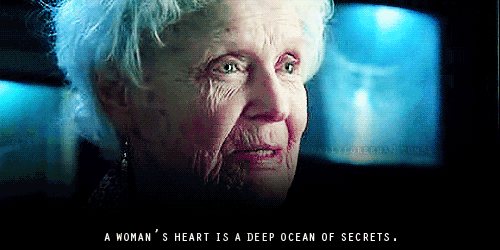We are now one week into reading The Intention Experiment by Lynne McTaggart. Have you begun the journey? At this point you should have read the Introduction and Part One of the book which brings you through the first 4 chapters (or about though to page 75).
If you’re like me and you’re NOT a science person, this book’s beginnings could feel a little challenging, but just charge on through. 8-10 pages a day keeps you on pace and McTaggart does a great job at different points telling you point blank what about each of these scientific experiments are important to her … usually the last few paragraphs of each chapter also sum things up pretty nicely.
But that’s also why you’re a member of Fearless Journeys. These book summaries will help keep you focused on the most important concepts. Speaking of, let’s get to that!
***
McTaggart tells us up front, in the introduction, that “The Intention Experiment rests on an outlandish premise: thought affects physical reality.”
The force is strong with this one!
She will show us through various scientific experiments. And, by the time we finish this book, she will ask us to participate in our own experiments. This area of study is so new in human history that we still need more data to affirm her theses and findings.
“Every thought we have is a tangible energy with the power to transform. A thought is not only a thing; a thought is a thing that influences other things.”
Fearless Journeys is all about building an entrepreneurial mindset. This book is going to help us get into our minds and understand how what we think can affect the world around us.
She’s also going to show us how we (and our thoughts) do not exist in isolation. They are part of a web of dynamic interrelationships. We do not journey alone! We do not act alone. Everything in the universe has energy, including our bodies and our minds. And all of that energy connects and has meaning in relationships with everything else.
I’m not a science person. I’ve said this above and I’ll say it again. But McTaggart insists on talking to us about science and the study of subatomic matter.
What researchers have found is that “the moment we looked at an electron or took a measurement, it appeared that we helped determine its final state. This suggested that the most essential ingredient in creating our universe is the consciousness that observes it. Several of the central figures in quantum physics argued that the universe was democratic and participatory — a joint effort between observer and observed.”
She adds that this research “suggests not only that the observer brings the observed into being, but also that nothing in the universe exists as an actual ‘thing’ independently of our perception of it … it implies that reality is not fixed, but fluid, or mutable, and hence possibly open to influence.”
WHOA.
So those experiments were about how ATTENTION to something affected physical matter. McTaggart adds: “if the act of attention affected physical matter, what was the effect of intention - of deliberately attempting to make a change? In our act of participation as an observer in the quantum world, we might be not only creators, but also influencers.”
WHOA. WHOA.
This the very matter she intends to explore throughout this book. How do our intentions affect physical matter?
McTaggart says that “Intention appears to be something akin to a tuning fork, causing the tuning forks of other things in the universe to resonate at the same frequency.” She adds that “a body of research also suggests that the power of an intention multiples, depending upon how many people are thinking the same thought at the same time.”
***
In Chapter One, McTaggart walks us through the many experiments of the physicist, Tom Rosenbaum, in mutable matter — that is the study of how matter changes in relation to outside influence. There’s a lot to dissect here, and I don’t want to fall too much into the weeds (nor will I know what I’m talking about if I do!)
The thing to really pay attention to here is what McTaggart says relates to the ideas she is trying to bring us about intention. She says that Rosenbaum and his team “realized that they had uncovered something extraordinary about the nature of the universe. And I realized they had discovered a mechanism for intention: they had demonstrated that atoms, the essential constituents of matter, could be affected by nonlocal influence. Large things like crystals were playing not by the grand rules of the game, but by the anarchic rules of the quantum world, maintaining invisible connections without obvious cause.”
McTaggart talks about these studies of entanglement, which mean an action performed on one atom will reverberate on any atom entangled with it, even if the particles are far apart. (That’s by best attempt at science!)
She adds that “entanglement at normal temperatures appears to be a natural condition of the universe, even in our bodies. Every interaction between every electron inside us creates entanglement.”
She then dives into the research of the renowned quantum physicist Anton Zeilinger. His group “had proved the unthinkable: the largest components of physical matter and living things exist in a malleable state.”
McTaggart also looks at the experiments of the scientist Sai Ghosh which “show that an invisible connection exists between the fundamental elements of matter, which is often so strong that it can override classical methods of influence, such as heat or push.”
Ghosh and Zeilinger’s work are “the first evidence that the peculiar properties of quantum physics occur not simply at the quantum level with subatomic particles, but also in the world of visible matter. Molecules exist in a state of pure potential, not a final actuality.”
McTaggart says all this research she presents in Chapter One suggests “that we are likely to be influencing everything around us.”
After all that science, that’s the key takeaway here!
***
In Chapter Two, McTaggart starts us off with the fun story of Gary Schwartz, in the good ol’ days of the TV antenna. If you’re old enough to remember, the signal that came through those TVs often fluctuated. Have you ever thought you were influencing the signal with your body? Gary Schwartz had that thought and unscrewed the antenna and places his finger there as a substitute. What he learned what that “he too was a receiver of invisible information, with the ability to pick up signals transmitted across time and space.
So we are not only able to have an influence on other matter, we can be the receiver as well. Schwartz’s experiments later led him to understand “the central mechanism of intention: something in the quality of our thoughts was a constant transmission, not unlike a television station.”
Through Schwarz, McTaggart introduces us to the idea of “biofeedback and the ways in which the mind could control blood pressure and a variety of illnesses.”
Another physicist Elmer Green also grew “interested in the energy being transmitted by the mind.” Green begin asking the question: “could it be that human beings were not only receivers of signals but also transmitters?”
Schwartz realized that “simple movement generated electrical charge, but, more important, created a relationship. Every movement we make appears to be felt by the people around us. The implications were staggering.”
McTaggart says, like Schwartz, she “suspected that the energy generated by thoughts did not behave in the same way as energy generated by movement.” She put her examination of this into place by studying healers, who appeared to be sending more energy than normal through their healing. That’s what led her to study the research by Stanford University physicist William Tiller.
Tiller asked volunteers to hold a mental intention during some of his experiments. McTaggart says that what Tiller learned was that “when someone holds a focused thought, he may be altering the very molecular structure of the object of his intention.”
WHOA. WHOA. WHOA.
Schwartz and his colleague, Melinda Connor, did more tests and came to the conclusion that “directed intention manifests itself as both electrostatic and magnetic energy. But they also discovered that intention was like playing the piano; you need to learn how to do it, and some people do it better than others.”
Of course this part about the fact that healing might be a magnetic effect did not explain long-distance remote healing.
Later in the chapter, we learn about the experiments that captured and recorded light waves that flowed out of the healers’ hands. Schwartz now had his answer about the nature of conscious thought: healing intention creates waves of light - and indeed these are among the most organized light waves found in nature.
McTaggart says through additional experiments, Schwartz “finally had his answer about the source of healing: if thoughts are generated as frequencies, healing intention is well-ordered light.”
She adds that Schwartz and his team “uncovered evidence that human beings are both receivers and transmitters of quantum signals. Directed intention appears to manifest itself as both electrical and magnetic energy and to produce an ordered stream of photons, visible and measurable by sensitive equipment.”
That’s another key takeaway!
***
In Chapter 3, McTaggart brings us the wonderful world of plant telepathy discovered by Cleve Backster. (What kind of books do you have us reading, Francisco?)
Well even McTaggart tells us that “plant telepathy interested me less than a tangential discovery … evidence of a constant two-way flow of information between all living things. Every organism, from bacteria to human beings, appears to be in perpetual quantum communication.”
WHOA again.
McTaggart restates that for her purposes, “Backster’s real contribution was his discovery of the telepathic communication carrying on between every living thing and its environment.” She later adds that the work of Backster and two other scientists, Popp and Korotkov, “suggested something profound about the effect of intention. Every last thought appeared to augment or diminish something else’s light.”
***
In Chapter 4, McTaggart introduces us to the results of the “Love Study” and what scientists learned about it.
“When you send an intention, every major physiological system in your body is mirrored in the body of the receiver. Intention is the perfect manifestation of love. Two bodies become one.”
She also mentions a research study from Bastyr University that “represented a major breakthrough in research on direct mental influence. It demonstrated that the brain-wave response of the sender to the stimulus is mirrored in the receiver, and that the stimulus in the receiver occurs in an identical place in the brain as that of the sender. The receiver’s brain reacts as though he or she is seeing the same image at the same time.”
The Love Study also found that “in many instances, when one person is sending focused intention to another, their brains appear to become entrained.” And to help us keep up with the science, McTaggart explains that “entrainment is a term in physics which means two oscillating systems fall into synchrony.” (Uh … got it!)
“Once they march to the same rhythm, things that are entrained send out a stronger signal than they do individually.” (Think of how this commonly occurs with musical instruments).
The Love Study also found that “our bodies unconsciously anticipate and act out our own future emotional states and that the nervous system doesn’t merely cushion itself against a future blow, but also works out the emotional meaning of it.”
In addition, the heart and the brain become entrained with each other and this entrainment between heart and brain tends to happen earlier and more frequently in women than it does in men (of course it does!)
They also offered up “more evidence that the emotional state of others is registered in the body of the receiver” and “that the home of the gut instinct is indeed the gut itself.” (Go figure!)
McTaggart says “this latest evidence was further proof that our emotional responses are constantly being picked up and echoed in those closest to us.” And this happens even when one person is not intentionally trying to influence another person.
So, of course, the scientists in the Love Study went forth in further experiments to find out what would happen if the sender was intentionally trying to influence the receiver.
This leads us to meditation. McTaggart says that “the scientific evidence demonstrates that meditation establishes more coherent brain waves… that it creates coherent biophoton emissions and in general aids healing.”
McTaggart concludes chapter 4 by telling us that the Love Study indicates a number of profound suggestions about the nature of intention:
Sending a directed thought seems to generate palpable energy
After a sender sends a healing, subtle aspects of a receiver’s body became activated; a kind of activating awareness as though the receiver’s body had felt or heard the healing signal
There had even been an element of anticipation in the receiver; as if the receiver had felt the partner’s healing intention before he had even sent it.
Certain conditions and mental states make our intention especially powerful and ourselves more ordered; and that these states can be achieved with training.
Attention, belief, motivation, and compassion are important for intention to work, but there are also pro bother other conditions that intensify its effects
We’'ll get into those other conditions this next week, but review these bullet points as your key takeaways from this week. And then, keep reading. By this time next week, you should finish Part II, which gets us through Chapters 5 to 8 (to about page 131). I will focus my intention on your reading and hopefully we can all help each other get there together!
No atom journeys alone!










